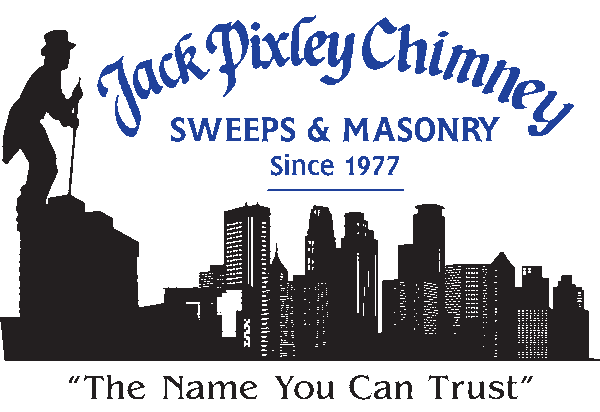While the winter season brings plenty of holidays, parties, and get togethers with family and friends, it also means shorter days, less sunshine, and colder temperatures. While we can keep our houses warm and toasty all winter long thanks to fireplaces, furnaces, and more, there is an increased risk of house fire when heating your home.
Christmas trees, overloading outlets, not cleaning dryer vents, or failing to replace air filters can all lead to accidental house fires during the winter. The following tips can help you prevent and avoid safety issues related to heating around your home this winter.
Safety Tips to Avoid House Fires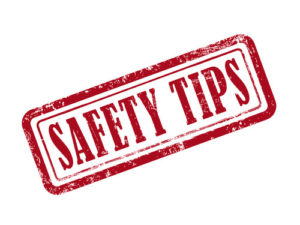
– Clean the dryer vents. The same lint that appears in your dryer’s lint trap can build up in the dryer’s vents. Over time, this can constrict air flow in the vents, affecting dryer performance and increasing the risk of dryer fire. Because lint is so flammable, overheated air from a dryer trying to compensate for blocked vents can cause an accidental fire. Dryer vents should be cleaned every few years or any time dry times or dryer performance begins to be affected.
– Have the chimney swept. Fall and winter are the most common seasons for fireplace use – and the most common seasons for chimney fires. Ensure your fireplace is ready to use in cold weather by having the chimney swept. Annual chimney sweepings remove soot, ash, and debris from the fireplace, as well as a flammable byproduct of combustion known as creosote. When allowed to build up over time in the flue, creosote can be ignited by a stray spark or ember and cause a chimney fire.
– Avoid overloading outlets. Of the approximately 5,300 annual electrical home fires, around 2,000 occur during the holiday season. With holiday decorations to plug in plus lamps, electronics, chargers, fans, and more, it can be easy to accidentally overload an outlet. Avoid overloading outlets by researching the circuits in your home; avoid running too many things on a single circuit by using extension cords, power strips, or additional plugs sparingly.
– Use space heaters with caution. Space heaters are a helpful way to quickly heat a room or provide additional warmth on particularly cold days. These heating appliances should be used with caution, however; make sure to research the specifics of your make and model to understand how to safely use it. As a general rule, electric space heaters are safer than their fuel burning counterparts. Before buying, look for space heaters with additional safety features such as tip over switch or touch sensors. If using a fuel burning space heater, try to crack a window in the room to prevent low oxygen levels and to help vent any byproducts of combustion.
– Check smoke detectors. Accidental house fires can happen year round. Make sure smoke detectors and carbon monoxide detectors are working properly by testing and changing the batteries every six months; a good rule of thumb is to test your smoke detectors at the same time you change your air filters. Smoke and carbon monoxide detectors should also be replaced every 7-10 years to ensure they are up to date with the latest safety standards and technology.
Preventative maintenance, common sense, and a few easy to follow steps can help keep you and your family safe around heating appliances this winter. For more information on fire prevention tips or to schedule a chimney sweeping or dryer vent cleaning appointment, contact Jack Pixley Sweeps today!
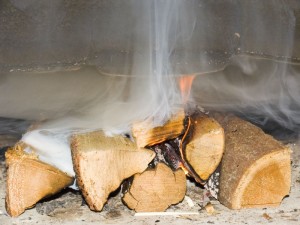
We conduct smoke tests to ensure your chimney is venting correctly
A new fireplace, insert, or stove is a great way to transform any living space in your home by bringing warmth and ambiance to the room. When having a new heating appliance added in your home, however, it is recommended to have them professionally installed and tested to ensure they are safely operating.
One recommended test for newly installed stoves, fireplaces, and inserts is the smoke test. According to National Fire Protection Association Standard 211, all new masonry chimneys must have a smoke test before they can be used.
What is a smoke test?
A smoke test is used when a new fireplace is installed to ensure that the fireplace is drawing and venting correctly. During the smoke test, a blowtorch is used to warm the flue and establish flue draw. Next a smoke pellet with a discernible odor is inserted. The smoke – and the odor – created by the pellet are one way we can tell how the fireplace is drafting.
Once the pellet has been lit, the first step is to wait and see if smoke is rising from the chimney. Once this smoke is seen, both the top and bottom of the flue will be sealed off, including closing all ash covers, doors, pits, and vents. This traps the remaining smoke inside the flue. Our chimney sweeps will then evaluate the interior and exterior of your chimney and home to ensure there are no leaks. If any leaks are found, repairs can be quickly made and evaluated.
During the smoke test process, we take the time to answer any questions you may have and explain each step of the process before we do it. We believe that this commitment to customer education allows homeowners to more fully understand and confidently and safely operate their heating appliances.
Why is a smoke test important?
While a smoke test may seem unnecessary, it is actually an important part of chimney safety. When a new fireplace is built or a stove or insert is installed, it is important to ensure that the byproducts of combustion are able to fully, easily, and correctly vent from the home. By using a smoke pellet, our chimney sweeps can identify any areas with defects or flaws; left unrepaired, these flaws could allow dangerous gasses such as carbon monoxide to silently seep into your home.
Smoke tests are also a tool for protecting your family against a chimney fire. Chimneys that vent incompletely are at greater risk for developing large pockets of creosote, a highly flammable byproduct of combustion that is the leading cause of chimney fire. By having the smoke test done on your new fireplace, you can rest assured that it is venting properly and minimal creosote will find its way into your flue.
If you’ve recently built a new fireplace or had a new stove or insert installed, call Jack Pixley Sweeps to schedule a smoke test. Not only will it make sure that your new heating appliance is venting correctly, but it can help protect your family’s health and safety. Contact us today to schedule your smoke test appointment!
When shopping for a new home, a fireplace can be a major selling point. Some homebuyers, however, are surprised to find that the fireplaces in their new homes have wood in areas that pose a fire hazard. Two of the most common places wood is found that can create a risk for fire is in the ash pit below the firebox and lintel area above the firebox.
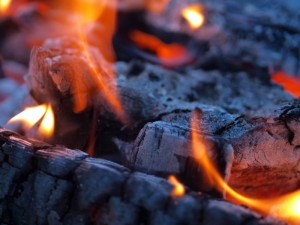 During an annual sweep, the CSIA certified technicians at Jack Pixley Sweeps also conduct a thorough inspection of the interior and exterior of the fireplace and chimney. These inspections are taken a step further when an ash pit is present in the home or there is wood in the lintel area.
During an annual sweep, the CSIA certified technicians at Jack Pixley Sweeps also conduct a thorough inspection of the interior and exterior of the fireplace and chimney. These inspections are taken a step further when an ash pit is present in the home or there is wood in the lintel area.
What is an ash pit?
An ash pit is a compartment at the base of the fireplace that is designed to hold a season’s worth of fireplace ashes. The main purpose of an ash pit is that homeowners do not have to remove ashes each time they use their fireplaces, which is especially helpful during the often inclement weather of the cold months of winter.
Mostly found in older homes instead of new construction, ash pits are typically built of cinder blocks or cement. However, sometimes wood is used by contractors to support the masonry during the building of the fireplace and ash pit. If left behind, this wood can create a serious fire hazard to the home. If ashes are not completely cool or if embers are not fully extinguished before being put in the ash pit, any remaining hot coals could ignite the wood and start a fire.
How to address wood in an ash pit
If wood is discovered in the ash pit, the most common recommendation is to discontinue use of the ash pit and seal it off. While it is possible to remove the wood, it is often an extremely costly project.
What is a lintel area?
A lintel is a load bearing component that holds up the top row of bricks in the fireplace opening. While modern lintels for fireplaces are made of steel, some older lintels may be made of wood. This can again pose a fire hazard as stray sparks or embers could accidentally ignite the wood.
How to address a wood lintel
Although wood in the lintel area is also difficult to remove, it can be done. However, the main concern with a wood lintel is that there is also wood in other areas that cannot be found without a Level III inspection. This level of inspection is often seen as a last resort because it involves removing portions of walls, masonry, or other structures to investigate the problem.
Instead, homeowners with wood lintels are advised to either discontinue use of their wood burning fireplace or install a gas insert to continue using the fireplace space. If you have questions or concerns about the presence of wood in your ash pit or lintel areas or need to schedule an annual sweep and inspection, contact Jack Pixley Sweeps today!

Jack Pixley Sweeps uses a chim-scan camera on each chimney flue 6″ or greater
When one of our Chimney Safety Institute of America (CSIA)-certified technicians from Jack Pixley Sweeps visits your home to perform your annual chimney inspection, we are certain you will be impressed and very satisfied with our special touch to the inspection: the Chim-Scan Closed Circuit Internal Evaluation System. Without this video technology, the inspector cannot see every inch of your chimney’s interior. Nor can he show you exactly what is wrong with your chimney. With the Chim-Scan camera, we can examine every area of your chimney, and we will show you the video footage after the inspection and explain our findings to you. We would like to tell you more about this phenomenal technology and why an inspection using the closed circuit Chim-Scan camera is so much better than one without this technological tool.
What Is a Chim-Scan?
According to the Estoban Foundation, the company that developed and manufactured this product, a Chim-Scan is a remote imaging apparatus designed to be raised or lowered into a chimney that provide the viewers, such as the chimney inspector and the homeowner, the ability to see every inch of the interior of a chimney up close. Via the Chim-Scan Closed Circuit Internal Evaluation System, the inspector and the homeowner have a view of areas that cannot be seen by regular visual means.
Why Is Using a Chim-Scan During a Chimney Inspection So Important?
Since the Chim-Scan camera can see every inch of your chimney’s interior, we may discover damage that would have been missed without a Chim-Scan. Damage to the inside of your chimney typically needs repairing before your fireplace can be safely used. Cracks in any part of your flue allow the toxic gases from combustion to leak out into your home. If you continue to have fires when your flue is cracked, you run the risk of further cracking due to parts of the flue not being protected from the heat of combustion. A Chim-Scan can also provide you with photographic and/or video evidence of damage if needed for insurance purposes.
What Are Other Benefits of the Chim-Scan Closed Circuit Internal Evaluation System?
Not only does a Chim-Scan find “hidden” flue damage, but it can also be used to diagnose chimney fire damage, find “patch” jobs done by amateurs, and indicate the presence of animals and/or their nests inside a chimney. Especially important after a chimney fire, it can help indicate the cause of the fire, how much damage occurred in the fire, and thoroughly document the situation for an insurance claim. After the scan has been conducted, there are different types of media you may receive including written reports, pictures, and video recordings.
Are you interested in the most thorough chimney inspection you can have? Contact Jack Pixley Sweeps to schedule your annual chimney inspection with the benefits of a Chim-Scan camera.
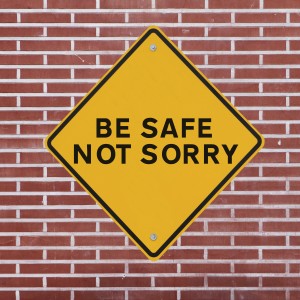
Use only a certified chimney sweep like Jack Pixley Sweeps to work on your chimney system
Fireplaces are an important part of our homes. In addition to serving a decorative or aesthetic purpose, they add value to a house and can serve as a reliable heat source during cold winter months. Despite the importance of proper fireplace and chimney maintenance, many homeowners neglect to complete necessary annual cleanings or attempt to do it themselves.
While DIY projects are a great way to save money on many household projects, cleaning a chimney system is not a project that should be undertaken by the average weekend warrior. By hiring a certified professional, homeowners can guarantee that their chimneys and fireplaces will last for years to come.
Why use a certified chimney sweep?
Just as you would not go to a dentist for a broken leg, it is not recommended to hire a regular renovation company to clean, update, or repair a broken fireplace or chimney. Hiring a certified chimney sweep ensures that the person servicing your chimney system is a trained professional who is up to date with the latest technology, standards, and techniques in the industry.
Most reputable companies will have chimney sweeps certified by the Chimney Safety Institute of America, or CSIA. With over 1,400 CSIA certified chimney sweeps in North America, it is easy to locate one of these highly trained professionals to service your chimney system. The technicians from Jack Pixley Sweeps are certified by both the CSIA and the National Chimney Sweep Guild.
What can I expect from a certified chimney sweep?
CSIA certified chimney sweeps are held to a higher level of knowledge and professionalism than others working in the industry. Because of this, you can expect your chimney sweep to be knowledgeable about the most recent advancements in chimney, fireplace, and venting safety along with the local building codes and manufacturer’s instructions for newly installed appliances.
Certified chimney sweeps should also act in a professional manner, including taking the time to explain how the cleaning process works, answering any questions you may have, and ensuring that furniture, carpets, and any other home décor is properly protected before beginning. Sweeps will evaluate both the interior and exterior of your chimney system, employing tools like the traditional chimney brush along with more modern technology such as vacuums, cameras, and other electronics.
Why is an annual inspection important?
An annual chimney inspection or cleaning is a chore that many homeowners tend to put off or ignore. Because of this, many small problems that could be easily and inexpensively fixed are not found until they become much bigger, more expensive, and more labor intensive problems.
“A chimney inspection is like an annual dental check-up,” says Ashley Eldridge, Director of Education for the CSIA. “It’s preventative maintenance that helps minimize potential hazards.” Additionally, the National Fire Protection Association Standard 211 says, “Chimneys, fireplaces, and vents shall be inspected at least once a year for soundness, freedom from deposits, and correct clearances. Cleaning, maintenance, and repairs shall be done if necessary.”
A certified chimney sweep will be able to not only clean and maintain your fireplace system, but will also be able to identify any areas in need of repair or those that many deteriorate in the future. Sweeps are also able to diagnose the causes behind common issues such as drafty chimneys, water leakage, or animal entry.

Proper storage of firewood can lead to better fires
While most homeowners go to great lengths to ensure that their fireplaces are properly maintained and in excellent working condition, many do not put nearly as much thought into what they’re putting into their fireplaces each season. Using the correct type of firewood – as well as wood that has been correctly seasoned and stored – can greatly improve fireplace performance and ensure that your fireplace system works well for years to come.
Firewood types
Although firewood is a generic term, each wood species has its own unique set of burning characteristics. Different species burn at different temperatures, speeds, and create varying amounts of smoke. Because of this, it is important to do research before investing in a large amount of firewood for the fall and winter.
The most popular and commonly used woods are often hardwoods. Hardwoods include species such as ash, maple, and oak, and can be identified by their broad leaves that typically change color during the fall. Hardwoods are generally preferred because they burn hotter and more steadily, producing less smoke than softwoods. However, hardwoods often light slowly, which can be a source of frustration when trying to build a warm, roaring fire.
Softwoods are typically needle-leafed trees such as firs, pines, and spruces. Because they produce more smoke when burned, softwoods are often a popular fuel for smoking meats. While their low burning temperature makes them somewhat less popular for fires, their ability to ignite quickly makes softwoods an ideal source for kindling. A prime example of this is using softwood kindling for a fire with hardwood logs.
Firewood seasoning
No matter what species of type of wood is being used, it is vitally important that the wood has been properly seasoned. Seasoned firewood is wood that has been chopped, stored, and exposed to the sun for at least 6 to 12 months. Doing this removes the moisture from the wood, allowing it to burn more efficiently and with less smoke. Wood that has not been properly seasoned will typically be hard to ignite and hiss while being burned due to the high water content in the wood.
Firewood that has been suitably seasoned will be lighter and less dense than freshly-cut wood, and banging two dried pieces together should produce a hollow, rather than dull, sound. Likewise, seasoned wood will often have cracked or split ends, indicating that the majority of the moisture has left the wood.
Firewood storage
While firewood should be exposed to sun and wind during the summer for seasoning, it needs to be protected from rain and snow during the winter. A cover, roof, or tarp can be used to protect a firewood pile and prevent snow from building up on the stack; however, whenever possible, the sides should remain open to allow air flow in the wood. This allows the seasoning process to continue and prevents a buildup of moisture. Likewise, wood should be stored off the ground to keep the bottom layer of wood dry, prevent rotting, and avoid insect infestation.
When bringing wood inside for use, only carry as much as you will immediately need. Firewood that is stored for long periods of time at room temperature can cause any dormant bugs in the wood to be become active.

